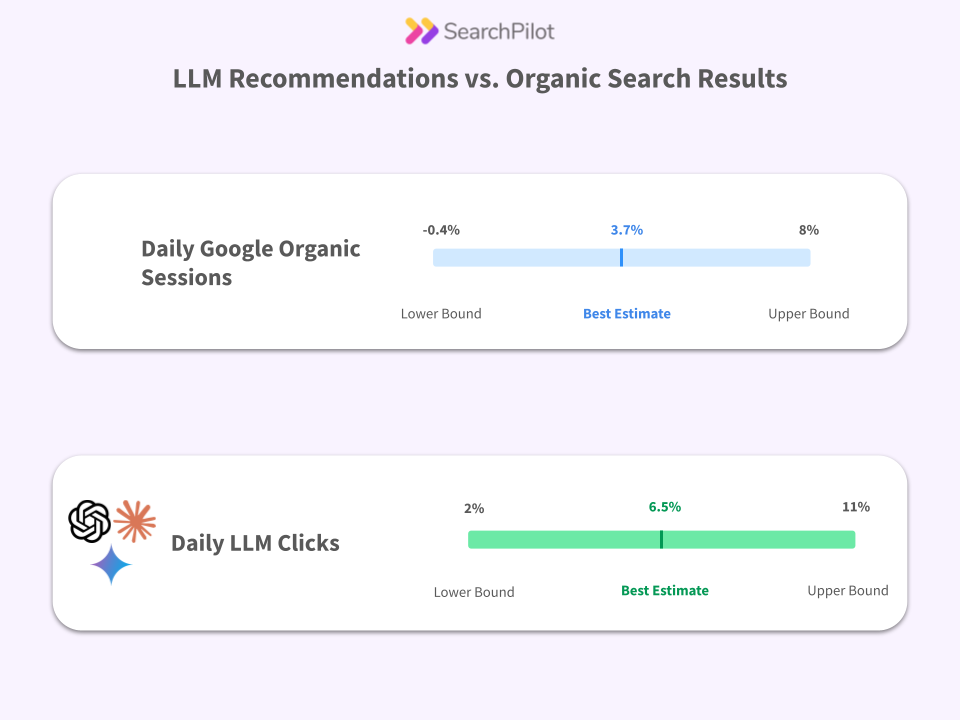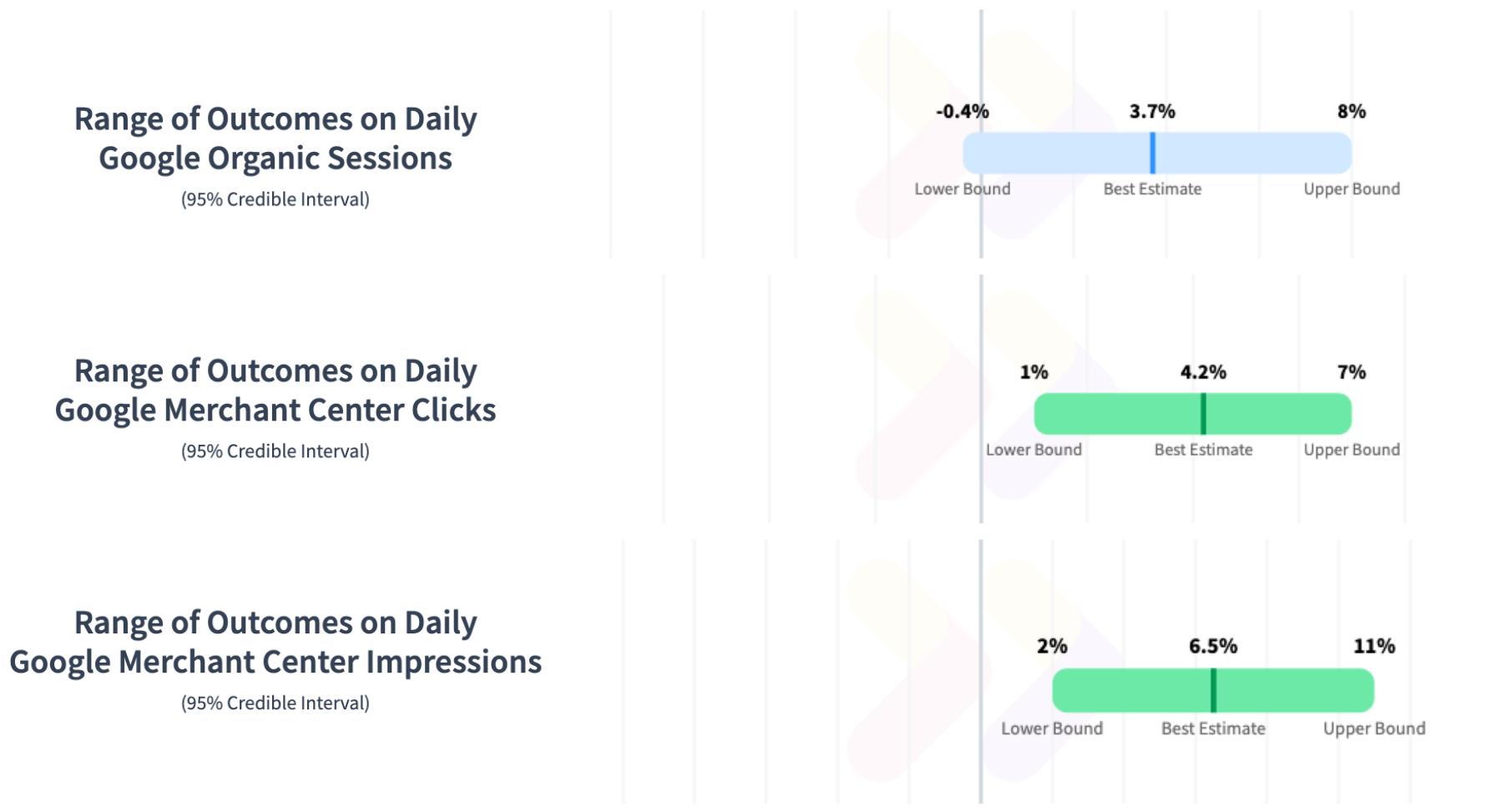In this SearchPilot webinar, Craig shared a simple yet powerful strategy for getting leadership buy-in for SEO testing using a single-page business case. Drawing on years of experience running thousands of experiments, he broke down why SEO ideas get rejected, how to build trust and alignment across teams, and how to present a compelling case for investment in SEO experimentation.
Why Good SEO Ideas Die in the Backlog Graveyard
Craig began the session by calling attention to the harsh reality many SEOs face: the "backlog graveyard". It’s the place where even the best, most well-researched SEO recommendations go to be forgotten. Drawing from survey data presented in the annual Aira State of Technical SEO report, he highlighted the most common obstacles in-house SEO teams face: struggling to get their recommendations implemented, being unable to clearly demonstrate the value of SEO work, and not getting buy-in from other business stakeholders. These all point to a core problem that SEOs can relate to; for many businesses SEO remains the biggest but least understood channel.
At the heart of this misunderstanding is a belief that SEO is uncontrollable. That despite our best efforts, rankings and traffic can rise or fall for reasons no one can confidently explain. This uncertainty breeds executive skepticism. And SEOs, often cornered into defensive positions, resort to caveats and qualifiers like "it depends," further eroding confidence in the channel.
The Illusion of Control: Why Traditional SEO Tools Fall Short
To understand how we got here, we need to examine how SEO teams traditionally operate. The standard toolkit includes analytics platforms like Google Analytics or Adobe Analytics and opportunity discovery tools such as crawlers and keyword trackers. But these are all rear-view-mirror tools, they’re output metrics.
They measure what happened, not what will happen. They give the illusion of control, but in reality, they leave teams reacting to outcomes rather than proactively steering strategy.
Craig likened this to driving a car by looking only in the rearview mirror. The point being: if we want to future-proof our SEO programs, especially in a world of AI disruption, we need tools and methods that let us experiment in forward motion. We need to start caring more about input metrics. SEO needs to be run in "control mode," not "react mode."
Why Experimentation is the Only Answer in an AI-Driven Search Landscape
The rise of AI and generative search experiences is fundamentally changing how people interact with search engines. Paragraph-style queries and passage-level understanding are becoming the norm. Google has seen an explosion of new, highly contextual searches, many of them long, specific, and unpredictable. These emerging behaviors have given rise to an explosion in search queries that were previously not possible.
In this new paradigm, we at SearchPilot believe that experimentation is not just a good idea, it’s a necessity. The rules are changing too quickly. No one, not even Google, fully knows what’s going to work next. The only way forward is to experiment and discover.
A New Way to Prove SEO Value: The 2x2 Framework
To help teams visualize the value of testing, Craig introduced SearchPilot’s 2x2 model, a quadrant-based framework that illustrates why testing matters even when experiments don’t yield positive results. In the upper left, we find "panning for gold", experiments that deliver positive results that would otherwise have been too risky or expensive to try without testing.
In the lower left, we see the value of "safety nets",high-risk tests that, although negative, help us avoid catastrophic losses.
In the lower right are "seatbelt tests", confidently wrong ideas that would have been rolled out without testing, but which testing helped intercept before causing damage.
Finally, the upper right contains "insurance changes", the least valuable quadrant, where expected positive changes turn out to be just that, with or without a testing program.
This model shifts the conversation from "did the test win?" to "what value did this test add to our decision-making confidence?" The real power lies in what testing prevents as much as what it produces.
Building the SEO Testing Business Case: ROI Models That Work
Convincing stakeholders requires more than frameworks. It requires numbers. And this is where we recommend using a structured ROI model to estimate the financial upside of an SEO testing program.
We start by calculating the average uplift from a winning test.
Based on thousands of tests we've run, we conservatively estimate a 10% uplift. Multiply this by the amount of non-branded organic traffic on the target page type (e.g., PLPs, PDPs, or local pages), factor in your average revenue per session, and apply a six-month impact window. This gives you the incremental revenue from a single test.
From there, we recommend estimating the number of tests you can run in a year, dependent on site traffic and templated page volumes, and applying a 15-20% win rate, which aligns with industry benchmarks. This projection gives you a reliable model for forecasting the value of a full SEO experimentation program.
Importantly, we also include rescued revenue in our ROI model: the estimated value saved by preventing negative changes from being rolled out. It’s often overlooked, but testing doesn’t just grow revenue; it also protects it.
Here’s a link to the free ROI calculator template.
Crafting the One-Page Plan: SCQA Framework for Executive Buy-In
Data alone isn’t enough. You also need a compelling narrative. That’s why we recommend using the SCQA framework (Situation, Complication, Question, Answer) to write a concise, executive-friendly business case for SEO testing.
Here’s a good primer on the SCQA framework.
Start by stating the current situation: SEO is one of your largest growth channels, yet it’s the least understood and hardest to control. Then introduce the complication: recent changes in AI and generative search have made traffic unpredictable, eroding executive trust and putting SEO budgets at risk. Next, pose the central question: how can we transform SEO from a passive, unpredictable channel into a controllable, ROI-driven one? And finally, present the answer: invest in a structured SEO experimentation program that allows the business to test hypotheses, quantify impact, and scale what works.
By keeping this business case to one page and anchoring it in data, you speak the language of the C-suite. You move from "please trust us" to "here’s the forecasted revenue impact."
Here’s a simple template you can use to get started.
From Guessing to Knowing: Why SEO Testing Is the Future
The core idea behind this webinar, and our approach at SearchPilot, is that SEO testing gives teams control in an environment full of uncertainty. When the algorithms are a black box, and user behavior is in flux, the only way to move forward is to treat SEO like a scientific discipline: form a hypothesis, run the experiment, measure the results, and adjust.
With testing, marketing teams can focus on what actually works instead of debating what might. Engineering teams see fewer, more strategic SEO requests backed by data. Product teams can measure search impact instead of guessing. And leadership teams get clarity on where to invest and why.
In a world of AI-driven search where every user journey is unique and increasingly personalized, SEO testing isn’t just about optimization. It’s about survival.
Ready to Take Back Control of Your SEO?
We’ve made it easy to get started. Use our free templates to build your ROI model and one-page plan. Enroll in our upcoming SEO testing course to get under the hood of experiment design, bucketing, and measurement. And if you're ready to discover what really works for your site, speak to our team about launching a tailored testing program.
SEO isn’t free. It isn’t static. But it is controllable, if you build the right program.
Take control of your SEO with SearchPilot



